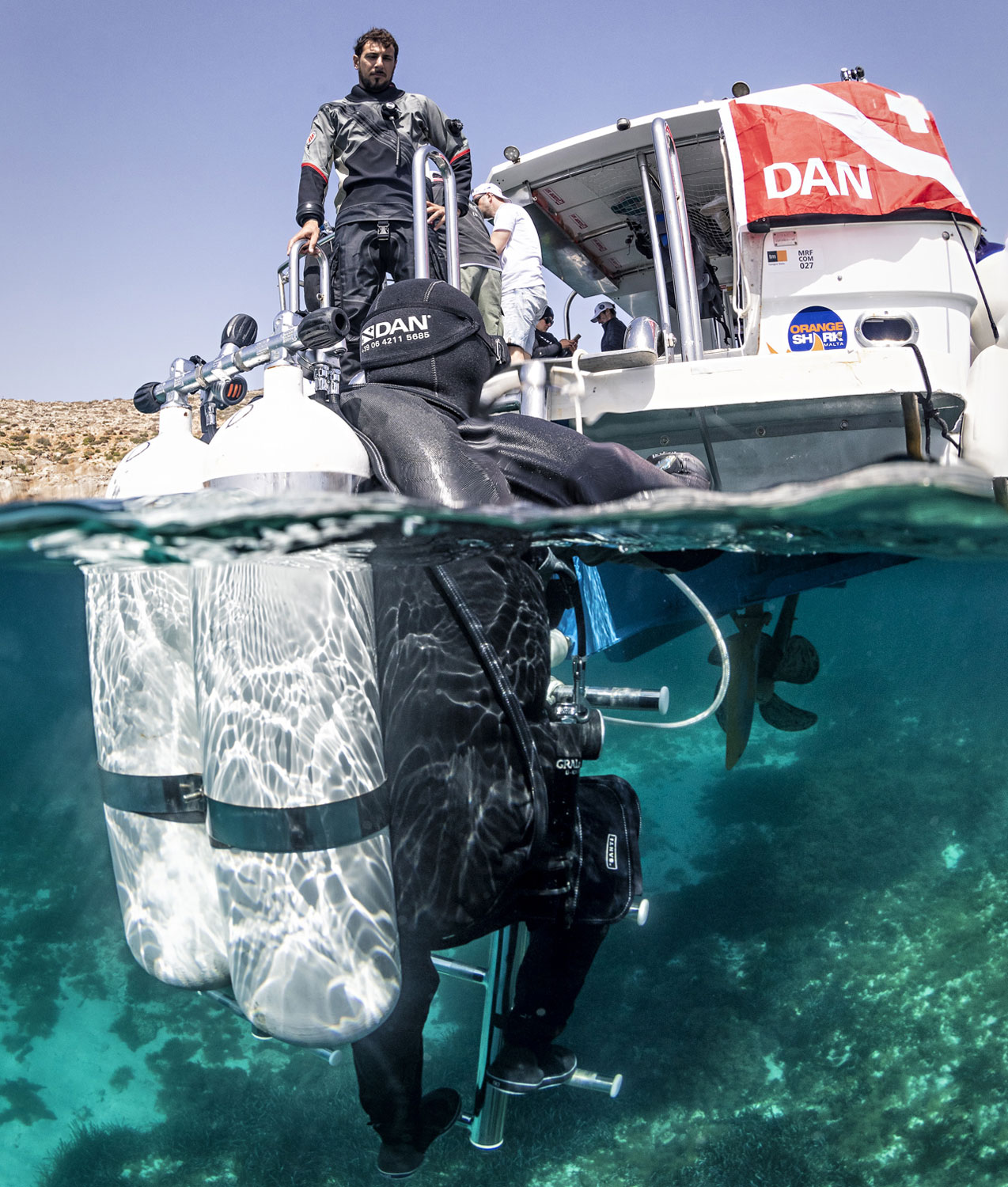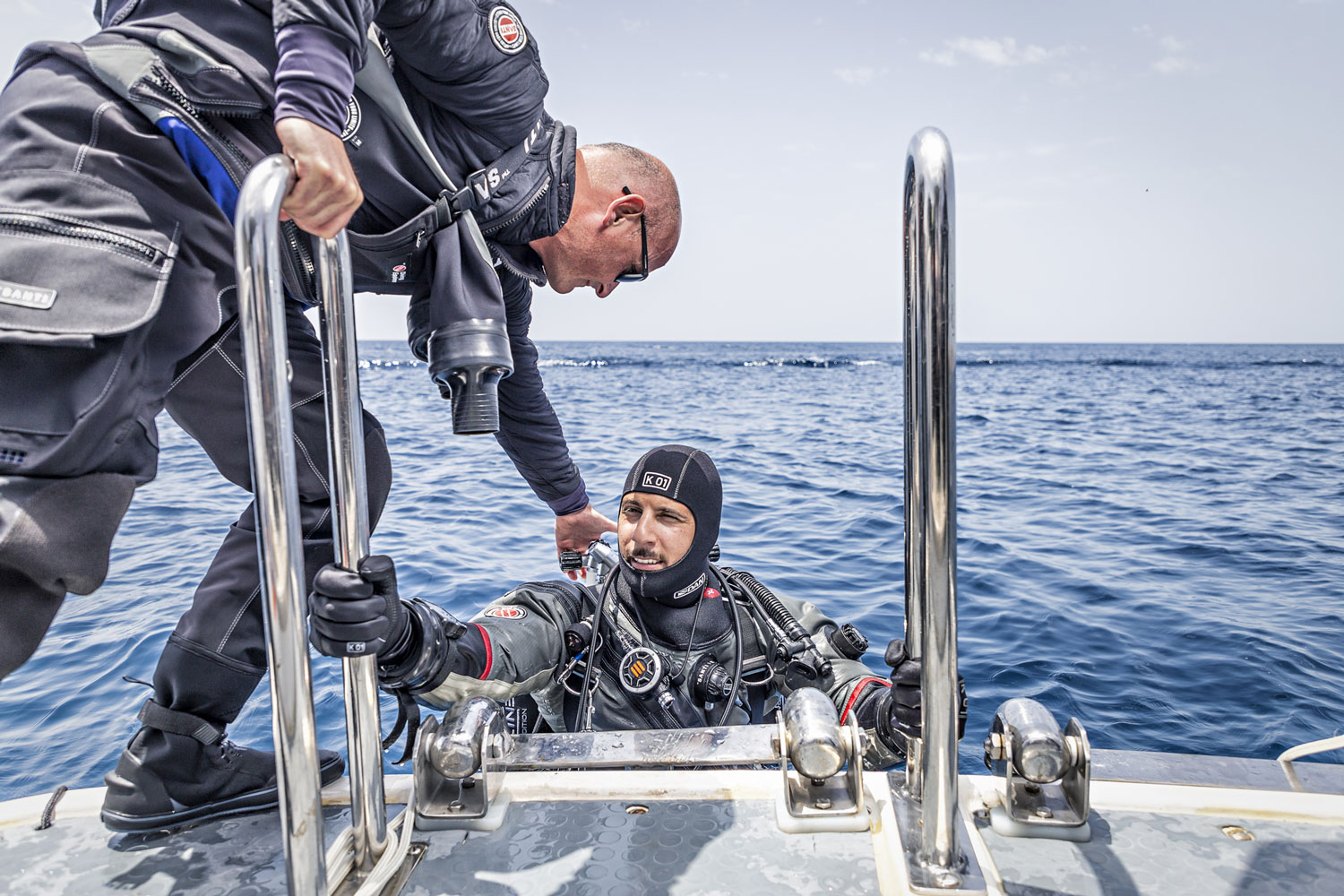Safety
Boat ladder safety
Most divers who have dived from boats know that before they enter the water, they need to check that nobody is below them. Also while using a ladder to climb back on-board after the dive, they make sure that nobody is below them if they should fall.
Divers are reminded frequently about these two safety precautions as part of the dive briefing. During the briefing, you should be told which pieces of equipment to remove prior climbing back on-board; this can differ from dive boat to dive boat, and location to location. Not all ladders, nor dive conditions are the same everywhere. You may find for example that H-ladders require you to remove your fins, while T-ladders, which are much more common and user friendly, allow you to keep your fins on.

What is less known amongst divers and rarely mentioned during briefings is how to avoid hands/finger injuries when climbing up the boat ladder. Sea conditions may make climbing up ladders more difficult, and although some boats have fixed boat ladders, most of the time divers will have to deal with moving, foldable ladders.
This type of ladder need not be a problem, if you are aware of how they work. First, be aware that these ladders are usually attached to the boat by a hinge. This allows the ladder to move up and down with the swell. Many of these hinges cannot be locked, so the ladder will move with or without a diver on the ladder. Think of the ladder as a ‘nutcracker’. Imagine one handle of the nutcracker being fixed, while you push on the other handle. The nut will crack open without having to apply much force. The boat ladder works in the same way.
One “handle” is the boat, the other is the ladder. When the ladder goes upwards (your legs go backwards when standing on the ladder)—in effect opening the nutcracker. But when the ladder goes downwards again, you really don’t want to get your hands or fingers caught between the two moving parts. Should this happen, you will not be able to release the pressure as all your weight is on the ladder and consequently you will end up with crushed or lacerated hands or fingers—perhaps even an amputation! The same applies to any other moving parts of ladders.These injuries can be avoided: just look careful where you place your hands. Sometimes it is easier said than done as the swell might make climbing on board challenging and you might not pay much attention to where your hands are placed. Ladder design can mitigate the risk of hand and finger injuries and dive centres are encouraged to do a thorough risk assessment and make sure their ladders are as safe as possible.

Finally a word on head injuries. It rarely happens, but just be aware that when there is a large swell, the ladder will rise up pretty far and will then crash into the water on the down swell. Make sure you are not under the ladder at that moment. This can also be challenging where strong undercurrents push you towards the ladder. Though you might think it will make it easier to grab onto, never surface too close to the ladder—it could ruin your whole day.
About the Author
Guy Thomas is an expert Diving and First Aid Instructor Trainer and works full-time as Director of Safety Programs at DAN Europe, where he is responsible for the development and implementation of the DAN Europe Safety Initiatives. He also is a member of the Special Rescue Team of the Italian Red Cross and operates as a Helicopter Rescue Swimmer/Diver Medic, onboard a SAR helicopter of the Italian State Police.

